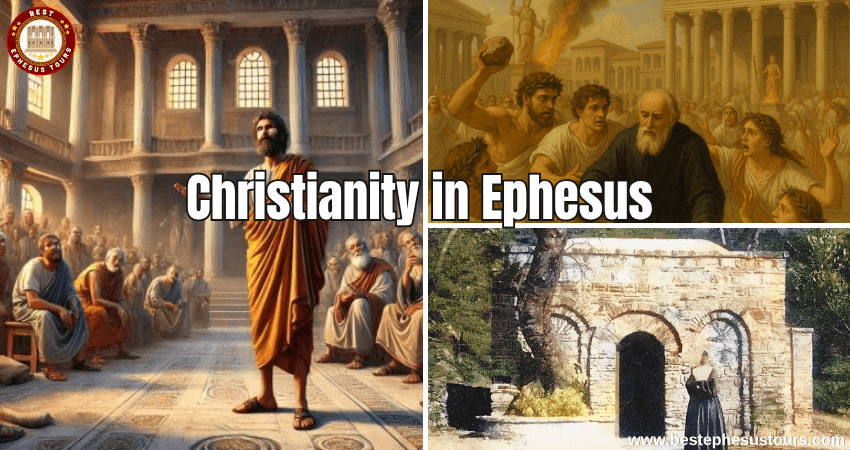
Ephesus: A Major Trading Center and Christian Hub
Ephesus was a major trading center of Rome in Asia Minor and played a crucial role in early Christianity. Both St. John and St. Paul lived in the city at different times and helped Christianity to spread.
Table of contents
- Ephesus: A Major Trading Center and Christian Hub
- St. Paul’s Ministry in Ephesus
- Ephesus in the Book of Revelation
- Christianity and Paganism in Ephesus
- The Virgin Mary’s Final Home
- St. Paul’s Influence in Ephesus
- The Silversmiths Riot in Ephesus Led by Demetrius
- Timothy’s Leadership in Ephesus
- St. John’s Life and Legacy in Ephesus
- St. John and the Virgin Mary in Ephesus
- Ephesus as the First of the Seven Churches
- The Ecumenical Council of Ephesus
- You May Also Like
St. Paul’s Ministry in Ephesus
It is also known from Acts 19–20 in connection with St. Paul’s ministry at Ephesus. Paul the Apostle probably spent almost three years in Ephesus during his third missionary journey. He only left Ephesus after a riot started by a silversmith called Demetrius. Adjacent to Philosopher Square, a staircase leads to an elevated platform in front of the Celsus Library. Many scholars suggest that this platform may have been the site of the School of Tyrannus.

Acts (19:9):
“But some became obstinate; they refused to believe and publicly maligned the Way. So Paul left them. He took the disciples with him and discussed daily in Tyrannus’s lecture hall.”
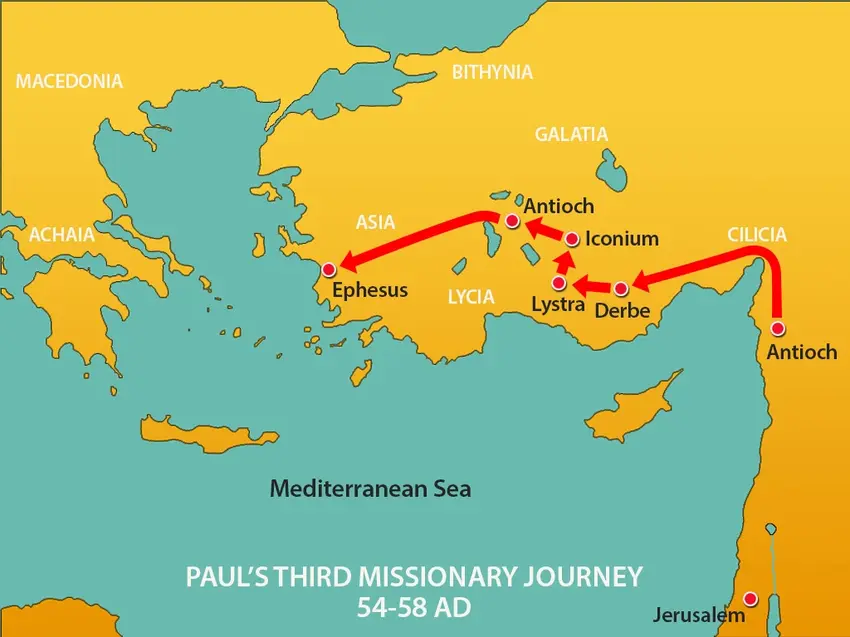
Ephesus in the Book of Revelation
The city was one of the seven churches of Asia mentioned in the Book of Revelation, written by St. John the Apostle, and also known as the city where John may have written his Gospel.
Christianity and Paganism in Ephesus
Although Christianity was introduced in the city in the 1st century AD by Paul the Apostle, both Christianity and Paganism coexisted in the city until the 4th century AD. After the adoption of Christianity (380 AD), it continued to be a crucial center, as it housed critical Christian events such as the 3rd Ecumenical Council (431 AD).

The Virgin Mary’s Final Home
In addition to all of these significant events, the majority of them take place in the New Testament, Ephesus Ancient City, also known as the Virgin Mary’s final home. According to popular Christian belief, after her resurrection, the Virgin Mary was brought to Ephesus by the beloved apostle St. John. The theory originated from Jesus’ entrusting the care of his mother to his beloved apostle.
St. Paul’s Influence in Ephesus
St. Paul is considered as the most famous and even the most influential of the early Christian missionaries, together with St. Pierre. His birthplace and many of the sites he visited on his travels to form the first Christian communities are within the borders of Turkey. Definitely, Ephesus has another significance among all these ancient sites.

Knowing that today the streets of the ancient city of Ephesus were the streets where St Paul walked, consisting of cities in the old days, and had a different meaning for the visitors in the ancient cities of Ephesus.
The first visit of St. Paul to Ephesus was on his second trip (A.D. 49–52).
He gave speeches in synagogues here on various subjects and answered the requests of the Ephesians to stay longer, as “I will return to you again if God wills.”
St. Paul’s Missionary Work in Ephesus
On his third journey, Paul came to the city of Ephesus to fulfill his promise and stayed for about two and a half years between 53 and 56 AD. Most likely, St. Paul wrote the Corinthians’ No. 1 letter in Ephesus during this period.
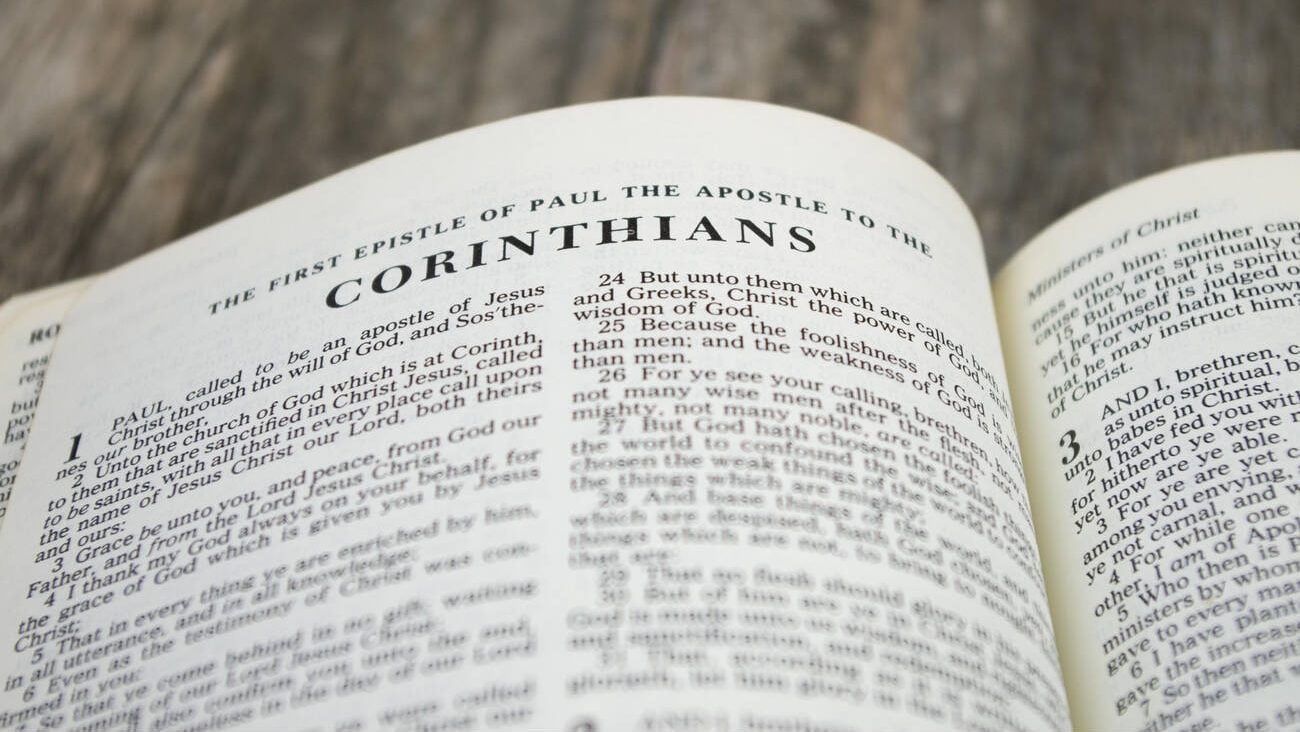
1 Corinthians 13:13
Now I only know in part; then I will know fully, even as I have been fully known. And now faith, hope, and love abide, these three; and the greatest of these is love.
During his stay in Ephesus, he did baptize the Christians there. He preached the gospel in the synagogue of Ephesus and the hall of Tyrannus (the owner of a lecture house). (Acts of the Apostles 19:9). He made the Ephesians hear the words of Jesus. He did not hesitate to make speeches even while walking from house to house, as he gave his sermons in open spaces beside synagogues.
Miracles and Challenges
Meanwhile, he performed many miracles. Handkerchiefs and clothes that touched the body of St. Paul were taken to those who were sick and those who had evil spirits in them. It was seen that they healed quickly. This miracle made the name of St. Paul commemorated with greater respect. As a result of all these miracles, the people, who were worried about the rapid spread of Christianity and the disregard of the temple of Artemis, were upset.

The Silversmiths Riot in Ephesus Led by Demetrius
There was a riot against St Paul in the year A.D. 56, under the leadership of Demetrius, the silversmith, who made a living by selling silver statues of the Mother Goddess Artemis. Demetrius and others collected thousands together in the Grand Amphitheatre of Ephesus. The crowd was shouting, “The Great Artemis of Ephesians!” St Paul wanted to face the crowd, but the disciples didn’t let him. Finally, the city clerk calmed down the protesters. St. Paul was probably jailed in Ephesus for a while before he departed for Macedonia to bring new followers to Christianity. Later, he came to Miletus from Macedonia. He sent word to the Ephesians, called the elders of the community to him, and told them how he served the Lord in tears, with humility despite the hardships and exclusions. And he set off to go to Jerusalem.

Timothy’s Leadership in Ephesus
After Paul left the city, Timothy became the leader of the Christian community in Ephesus. He was one of the disciples of St. Paul, whom he met in Lystra. Afterward, Timothy joined Paul and Silas, on the missionary journey to the city of Ephesus.
In the New Testament, there are 13 letters of St. Paul. During his arrest in Rome (A.D. 61) St. Paul mailed 3 letters to the Ancient City of Ephesus: Timothy No.1, Timothy No. 2, and Ephesians.
St. John’s Life and Legacy in Ephesus
St. John was one of the first disciples. He was an elder in the early Christian church and helped to spread the gospel message. He wrote the Gospel of John; the letters 1 John, 2 John, and 3 John; and the book of Revelation.
It is believed that St John was the youngest of the apostles, and he is said to have lived to an old age, dying at Ephesus (A.D. 93–94) during the reign of Emperor Trajan. Traditionally, he is believed to be the same person as John the Apostle (John, son of Zebedee), and the Gospel of John.

The most important document that proves the existence of St. John in Ephesus is the letter of the Ecumenical Council held in Ephesus (A.D. 431). This letter mentions “the city of Ephesus” as where John the Theologian and the Virgin Mary lived and were buried.
According to a Christian tradition, it is believed that St. John traveled from Jerusalem to the city of Ephesus, where he remained for the rest of his life. St. John was exiled to Patmos during a time of persecution in the time of Emperor Domitian. He wrote Revelation (the Apocalypse) at the time he was exiled to the Isle of Patmos.

St. John and the Virgin Mary in Ephesus
It is also believed that he went to Ephesus together with the Virgin Mary, based on the book of John (entrusting the care of his mother to his beloved apostle).
When Jesus saw his mother and his beloved disciple standing nearby, he said to his mother, “Mother, here is your son!”. Then he said to the disciple, “Here, your mother!
From then on, this disciple took Jesus’ mother into his home. (John 19:26–27).
Ephesus as the First of the Seven Churches
Ephesus is the most important church among the seven churches of revelation in the Bible. [ Ephesus, Smyrna, Pergamum, Thyatira, Sardis, Philadelphia, and Laodicea] All seven churches in the New Testament Book of Revelation are located in Turkey. The book is commonly dated AD 95, as suggested by clues in the visions pointing to the reign of Emperor Domitian.
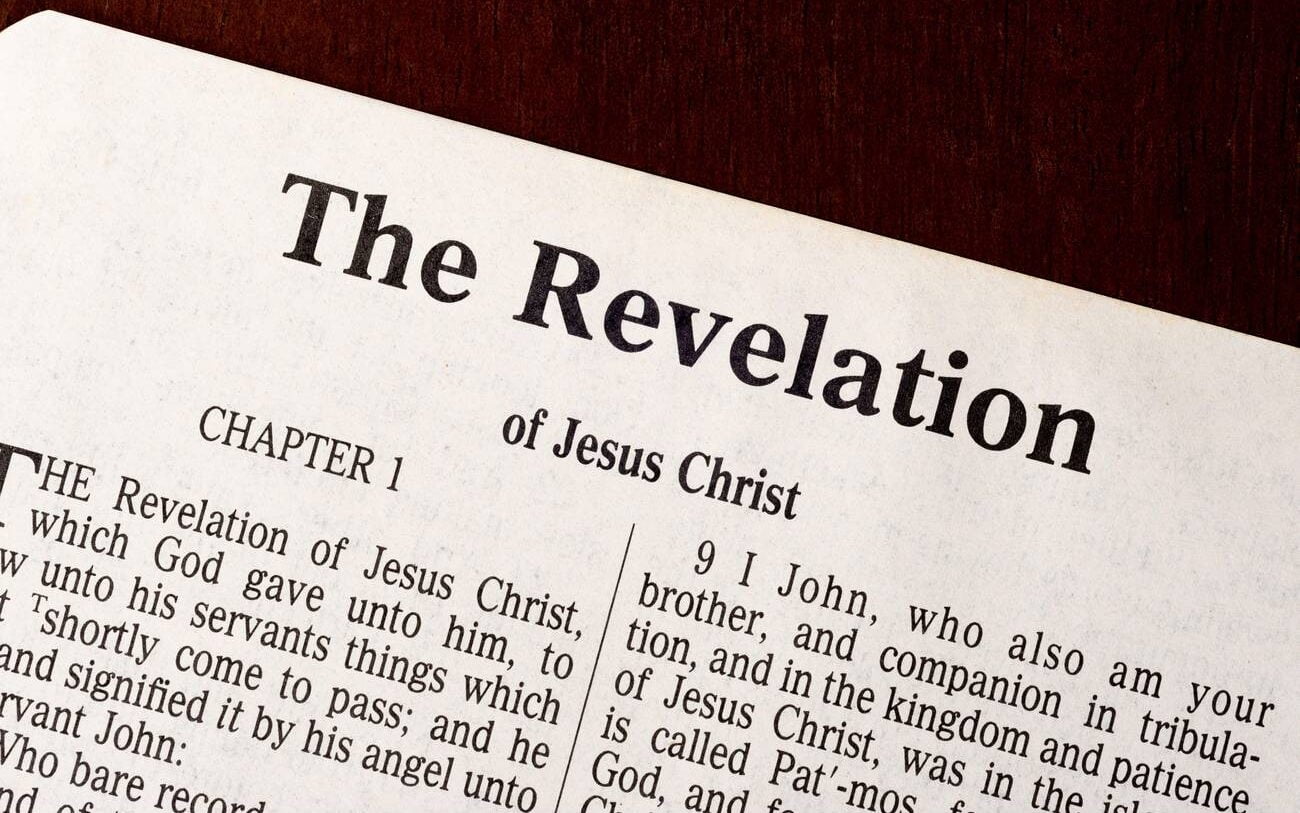
According to Revelation 1:11, Jesus Christ commands John of Patmos:
“Write what you see on a scroll and send it to the seven churches.”
The churches mentioned in this context refer to a congregation or local community of Christians living in the cities, but not a proper building or a visible construction to which the word “church” refers in general.
Each of these scrolls or letters includes specific information for each city. The first letter was to the church in Ephesus. The city was famous for its temple of Artemis (or Diana). Ephesus was a center of pilgrimage for believers from all over the Mediterranean world to worship. Emperor Domitian ruled during the time that John wrote Revelation. The historian Eusebius states that; the Christians in Ephesus were sorely persecuted, especially during the reign of Domitian—his reign was characterized by terror—in the latter years. Nevertheless, the message to Ephesians contains the highest praise and the lightest rebuke. And this might be considered as proof that Ephesus was the most important Christian center compared to the other seven churches.
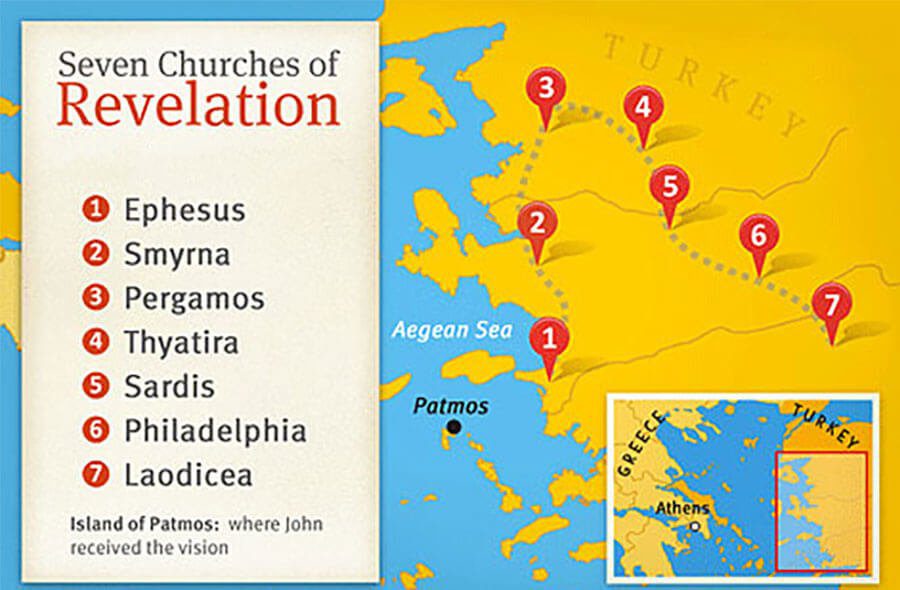
(Revelation 2:1-7)
(1) “Write a letter to the leader of the church in Ephesus and tell him this:
“I write to inform you of a message from him who walks among the churches and holds their leaders in his right hand.”
(2)“He says to you: I know how many good things you are doing. I have watched your hard work and your patience; I know you don’t tolerate sin among your members and you have carefully examined the claims of those who say they are apostles but aren’t. You have found out how they lie.
(3) You have patiently suffered for me without quitting.
(4) “Yet there is one thing wrong; you don’t love me as at first!
(5) Think about those times of your first love (how different now!) and turn back to me again and work as you did before, or else I will come and remove your candlestick from its place among the churches.
(6) “But there is this about you that is good: You hate the deeds of the licentious Nicolaitans, just as I do.
(7) ” Let this message sink into the ears of anyone who listens to what the Spirit is saying to the churches: To everyone who is victorious, I will give fruit from the Tree of Life in the Paradise of God.”
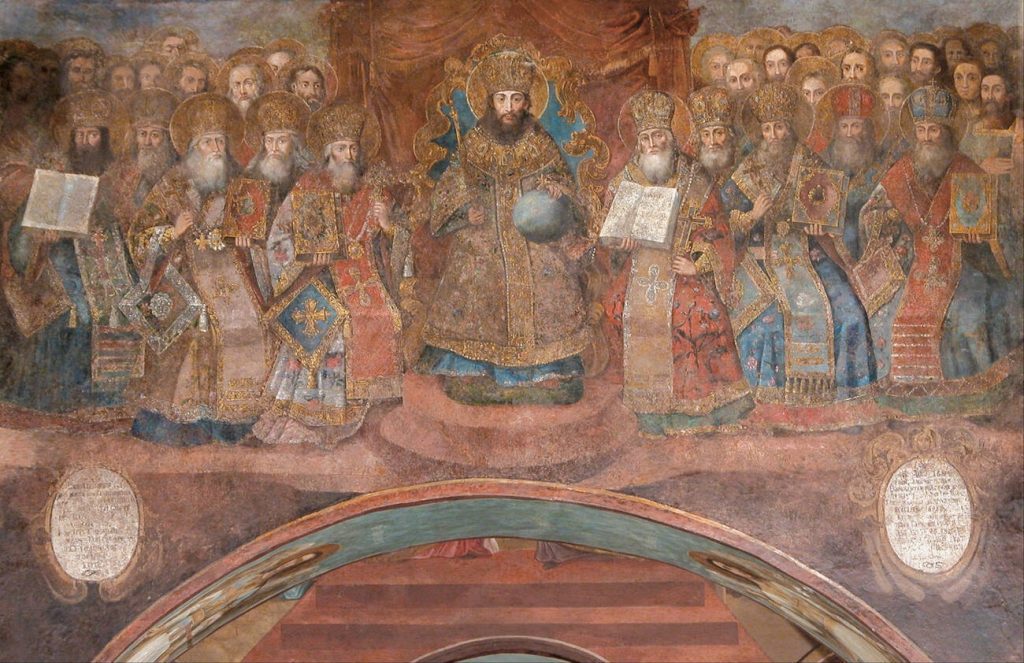
The Ecumenical Council of Ephesus
The Council of Ephesus was the third of the Ecumenical Councils. It was held in AD 431 June and July, by the Roman Emperor Theodosius II, at the Church of Mary.
The Council of Ephesus focused on three main discussions.
1. İntending to compromise consensus in the church through an assembly representing all Christendom.
2. Confirming the original Nicene Creed.
3. Condemning the teachings of Nestorius,
The archbishop of Constantinople. who held that the Virgin Mary may be called the Christotokos, “Christ-bearer” but not the Theotokos, “God-bearer”.
You May Also Like
If you like to discover biblical sites like the Basilica of St. John, and The House of the Virgin Mary with us and learn more about Christianity in Ephesus Turkey, you can join our private biblical Ephesus tours or Jewish Ephesus tours by clicking the link below.








